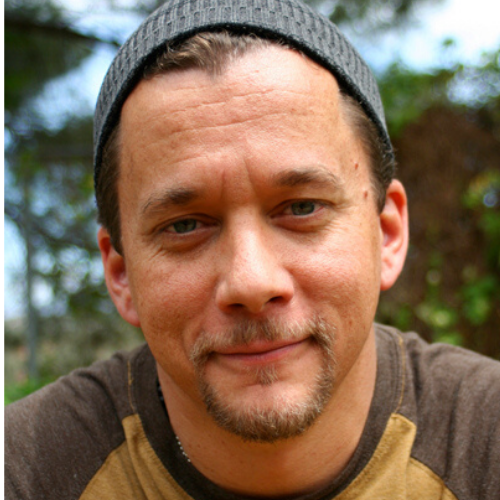View basket (0 items $0.00)
Error message
- Notice: unserialize(): Error at offset 5 of 154 bytes in variable_initialize() (line 1202 of /home/dh_6hcdc2/yogau.online/docroot/includes/bootstrap.inc).
- The file could not be created.
- The file could not be created.

From Dukha to Sukha: Why We Suffer and How Yoga Can Help - A Simple Technique for Breath Awareness
“Difficulty lies not in the action, but in the mind’s reaction.” – Jeff Masters
It is said that to suffer is to be human. In fact, the first of the Four Noble Truths in Buddhism states that the very nature of life results in the experience of suffering. This statement's essence may be true; however, we don’t have to wallow in it. By doing so, we prolong our pain and prevent ourselves from evolving beyond the point of the experience. The choices we make and the actions we take, directly after a painful experience, increase or dissipate the suffering.
What Creates The Experience of Suffering?
Experiencing or “feeling” pain and or distress is a not-so-pleasant part of life. It occurs largely due to the friction that arises between our experience of an event compared to our desire and attachment to a specific outcome.
In yoga, there is a word that embodies the experience of suffering and pain, and that word is duhka. It is said that when one experiences duhka somatically in the body, it is a pressure or weight in the chest and solar plexus and that it brings about a “feeling” of darkness or an inability to see things, people, situations clearly. The very presence of this experience in your life brings darkness to your understanding of the situation and world around you.
Let’s say, for instance, you are applying for the perfect job. You prepare for and nail the interview. You are so confident that the interview went well that you even purchase a new suit, plan the layout of your new office and call potential rentals in the perfect neighborhood. Then you find out that the job was given to someone else, in fact, a peer less qualified than you. The impact of an experience like that can be somewhat … unpleasant. The natural result of an experience like this is for the mind to begin to race and question everything. In an instance like this, the mind becomes a distraction unto itself.
Nowhere is this more apparent than when we are experiencing some form of suffering. As we have all experienced, suffering can come in many forms, from the minor irritation of confusion and misunderstanding to the deeper pains of trauma, deeply embedded attachments, and lifelong expectations. When we are attached to anything that doesn’t materialize, for whatever reason, the suffering can be great.
In the moment of suffering, two primary questions arise in the mind that reinforce patterns of thinking that can occlude our deeper awareness. These two simple questions are, “What?” and “Why?” Typically, these two questions manifest as the internal quests to pick apart “What just happened?” and “Why did this happen to me?”
The questions of what and why are reinforcements of our experience of suffering and stimulate negative self-talk, disappointment, self-criticism, and judgment. The fixation of our mind on the details of an experience can perpetuate and potentially increase the level of our suffering. (3)
It is common for us to think that by answering these questions it will help, perhaps even aid in the healing process. However, these two questions are actually impediments to the kind of healing and self-development necessary to prevent the reinforcement of the pain or discomfort. Once we identify what happened and why it occurred, there is always another layer of what and why.
In fact, the deeper, seemingly protective aspects of the mind (ego) will use this mechanism as a distraction, luring our awareness away from crucial points of understanding with brilliant internal imagery and catchy dialogue. Not to worry; in the moments where our mind begins winding down the rabbit hole of recursive distraction, there are some very simple practices that can have a profound effect, on not only the way we think but also on the structure of our bodies and the very fabric of our nervous systems.
The “P” Word: Practice!
Before we get to a simple practice that can assist in interrupting the cycle of questioning the what and why it’s important to understand that this is a practice, as such it requires you to put in time in order to embody it and experience the transformation that can come from tasting its fruits. (I see that glazed over look in your eyes. Don’t worry; it’s not a lot of time.)
By nature, the body adapts to change. This is the foundation of homeostasis. This includes any cognitive changes we may make. In the beginning, there may be resistance that arises in the form of our awareness drifting back again and again into the pattern of thinking that we are attempting to alter. The important piece to remember is that eventually, the nervous system will respond and “rewire” those pathways, enabling us to make the practice at hand more stable. It is more important to commit to a consistent practice than to have a “perfect” practice.
When you’re stuck in a pattern of asking what and why and are aware that it’s happening (in powerful, emotional moments, the questioning may be automatic), an effective practice to interrupt this is simply to reorient your awareness to the breath and ask another set of questions.
How to Practice: Keep It Simple & Sweet
In order to effectively reorient your awareness, a practice has to be simple and take only a few moments to implement. The simplest “interruption” that we can use is to take our attention from the nagging questions of what and why and refocus on the basic sensations of our breath. It is through our continued awareness of the breath that we are able to tap into and effect the deeper impulses of our subconscious and rewire our unconscious reactions. (5)
Interrupt The What and Why

For one to two minutes, sit or stand comfortably and pay attention to the sensations of your breathing:
-
Focus on the air passing into and out of your nose.
-
Tune into the feeling of the rise and fall of your chest.
-
Feel the pressure of your diaphragm dropping downward and your belly gently expanding outward as you inhale. There is no need to control anything, lengthen the breath, or alter your natural breathing in any way.
At the conclusion of the two minutes, become aware of the quality of the sensations throughout your entire body and how the mental chatter has shifted.
How to Go Deeper
As your focus drifts to your mental chatter, bring to mind the substitute questions, “how?” and “where?,” specifically, “how do I feel?” What are the sensations that you are experiencing in your body at that very moment? Examples may include:
-
Increased respiratory rate
-
Flushed face and ears
-
Increased heat in the body
-
Tension in the abdomen
-
Sharper vision, hearing, smell, etc.
Also, ask yourself, “Where am I experiencing these sensations in my body?”
“Where exactly in your body are these sensations located?”
By focusing on how it feels to breathe and asking these two new questions, we create a moment where we can interrupt or disturb the pattern of suffering in our minds and our bodies.
Why Does Breath Awareness Help?

I’m a big “why” guy. I feel that having a basic understanding of how something works or what it does gives you reason and motivation to invest your time and energy into the process.
The questions what and why reinforce our experience of suffering by externalizing our awareness and making more acute patterns of discomfort or pain. The repeated, externalized, reexperiencing of the memory lends itself to inaccurate recall and potential adulteration from our ego. Remember, negative self-talk, disappointment, self-criticism, and judgment are all side effects of the what and why. (2)
Neurologically, when we focus on the questions of what and why, those areas of the brain associated with vision, waking state consciousness, associative reasoning, the stress response, and the externalization of awareness, in general, are acutely activated. (4)
When we shift our focus to simple breath awareness and ask how and where, the more profound, internal structures of the brain light up. These structures are associated with emotional reactivity, clarity of memory, and the downregulation of the stress response. At the same time that these deeper parts of the brain are being activated, the unconscious, automatic physical reactions of the body, connected to and created by each experience of suffering, are being unraveled. (1, 2, 4)
Questions for Reflection
What has been your experience of the connection between your breath and your conscious experience?
As you implement the above techniques, what have you experienced?
What does “unconscious, automatic physical reactions of the body” mean to you?
Printed with permission of JeffMasters.net

 Long before teaching, Jeff was a devoted student and apprentice, studying and practicing the ancient wisdom teachings of the East. These deep roots contribute to his unprecedented ability to relate the original purpose of the practice of Yoga to a variety of students in easily accessible ways.
Long before teaching, Jeff was a devoted student and apprentice, studying and practicing the ancient wisdom teachings of the East. These deep roots contribute to his unprecedented ability to relate the original purpose of the practice of Yoga to a variety of students in easily accessible ways.
"Sharing knowledge is only one of my responsibilities. A good teacher is one that lights the student’s path." Jeff’s classes include the sharing of ancient wisdom and insight; interactive lectures unpacking concepts and protocols; and practices that embody and integrate each lesson. "A good teacher integrates the teachings and practices and holds space for students to discern meaning from their own direct experience."
In order for students to get the most out of their time together, Jeff requests two things: one, that students become clear about their intention or purpose for learning and, two, that they stay 100% committed to this purpose throughout the process of the class.
For all the knowledge seekers who are ready for a shift, those wondering why, or feeling there is more to what they are hearing or have been taught, Jeff invites you to join him.
Resources
1. Streeter, C., Whitfield, T.H., Owen, L., Rein, T., Karri, S.K., Yakhkind, A., Perlmutter, R., Prescot, A., Renshaw, P.F., Ciraulo, D.A., Jensen, J.E. (2010). Effects of Yoga Versus Walking on Mood, Anxiety, and Brain GABA Levels: A Randomized Controlled MRS Study. Journal of Alternative Complement Medicine, 16(11), 1145–1152.
2. Eagleman, D. (2007, August). 10 Unsolved Mysteries Of The Brain: What we know—and don’t know—about how we think. Discover Science, Technology and the Future, 54-75. Retrieved from http://discovermagazine.com/2007/aug/unsolved-brain-mysteries.
3. Linton, S.J., Shaw, W.S. (2011). Impact of Psychological Factors in the Experience of Pain. Physical Therapy, 91, 700-711.
4. Farb, N.A.S., Segal, Z.V., Anderson, A.K. (2013). Attentional Modulation of Primary Interoceptive and Exteroceptive Cortices. Cerebral Cortex 23 (1), 114-126.
5. Saraswati, Swami Niranjanananda (2009). Yoga Darshan: Vision of the Yoga Upanishads. Yoga Publications Trust, Munger, Bihar, India.
Featured Courses









